Murchison Radio-astronomy Observatory News

December 2019 issue

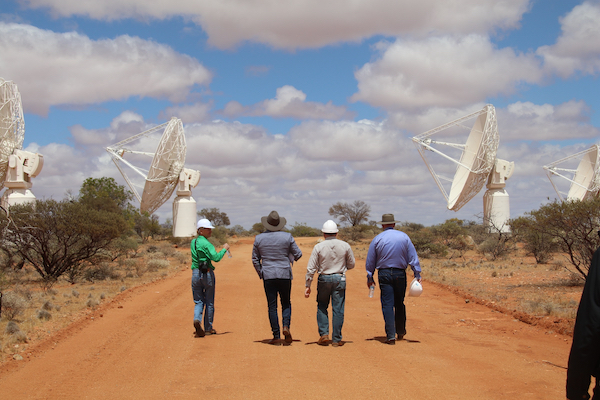
It's hard to believe this is the final edition of MRO News for the year! It feels like we were only just welcoming everyone to the first 2019 edition, and the year is almost at an end.
We’ve had several visitors to site since our last newsletter. In November we hosted two WA senators, Senator Slade Brockman and Senator Matt O’Sullivan. Senator Brockman attended the Joint Standing Committee on Treaties when the SKA Convention was heard and has a keen interest in the SKA project. He informed me he is also an enthusiastic 'space-geek’. Both Senators are also very excited about the space industry and the potential it has to offer Australia and in particular WA. The Senators (and their advisors) enjoyed the experience and both showed immense interest in what we were doing out in the Murchison (MRO).
We also hosted another visit from SKA Office staff members. They were working on engineering operations and SKA integration planning. Site visits from international visitors are likely to be a regular feature as the SKA progresses.
It was wonderful to catch up with representatives from the Murchison Shire Council (MSC) at the recent Regional Stakeholder Group (RSG) meeting, held at the Geraldton University Centre (GUC) on 3rd December, and a few days later Brett Hiscock and I stopped in to meet with Bill Boehm, the CEO of the Murchison Shire Council; this was my first opportunity to meet Bill and wonderful to be able to do so before we break for the Christmas season.
Our final Indigenous Land Use Agreement (ILUA) Liaison Committee meeting for this year was held at CSIRO’s MRO Support Facility (MSF) in Geraldton during September. This provides the Wajarri Yamaji, CSIRO and the Department of Industry, Innovation and Science (DIIS), the opportunity to review MRO-related activities and opportunities and ensure compliance with the ILUA.
I wish you all a Merry Christmas and a Happy New Year.
Kevin Ferguson, CSIRO
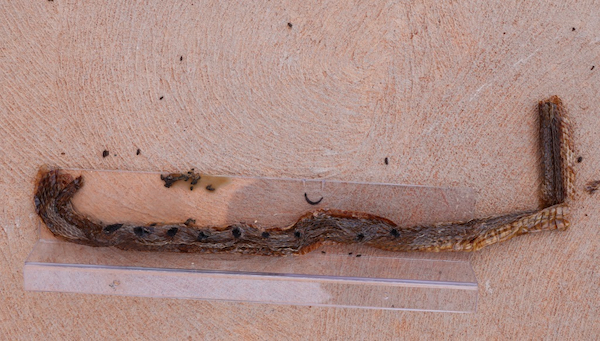
Driving out to Boolardy this week, I couldn't help but recall the time someone told me that “CSIRO can control the weather”!
While looking north all I could see was dark clouds and threatening isolated storms. As locals would be aware it has been very dry and there’s been no sign of rain. Watching our weather station over the last few weeks we’ve often seen high temperatures with humidity around 5%.
This week we were planning a major shutdown of all of our equipment for high voltage maintenance and a number of other repairs, including installation of a new 840 A RFI filter. A significant planning effort, with many involved. With those clouds in the distance, seemingly close to the MRO, I recalled a similar event, when we had substantial rain, leaving us isolated at Boolardy. We had everything shutdown with just some critical equipment left running on a small generator, and some folks wondering if we were going to overheat that equipment.
Well it was Déjà vu this week and it felt like all we have to do in the future is schedule high voltage maintenance if we want it to rain. Unfortunately for the country it looks like all we got was a few isolated showers, but fortunately for us we were able to proceed with our work. Perhaps CSIRO can’t control the weather after all!
Maintenance jobs are keeping us busy, we replaced a hydraulic hose in the merlo elevated work platform and work is continuing on the ‘drive systems’ with routine greasing of antennas, and this week we found one of our gearboxes had worked loose. With five per antenna, we have 180 in service at any time.
Unfortunately one of our PAFS suffered too much damage during a recent lightning storm so we ended up removing it from the antenna for significant repair. I don’t believe the antenna was struck, but with the receiver designed for sensitivity it is vulnerable to electrical discharge damage. A close strike has potential to damage equipment, so we might have to reconsider protection levels.
It was great to host Pia school students again this year and we had our education officer from Sydney, one of our Perth scientists and Rochelle from Geraldton all assisting with the visit. The kids really did seem to enjoy the visit, and were on their best behaviour as well, it was great to have them at site.
Coming up, it looks like we will have more heritage work before Christmas, and we’re in early planning for a visit next year by the team from CETC54 to replace some of the antenna panels as part of the warranty repair.
A team from Arizona State University is planning to visit early next year to upgrade their equipment on site. Their instrument is known as ‘EDGES’ and is doing world class leading science, a testament to how great the site is for radio-astronomy, otherwise they wouldn’t be coming to use our infrastructure.
Today I worked with Alex (who you’ll meet at the end of the newsletter) and we had to remove a mummified snake and mouse from an electrical switch board. These guys shouldn’t have been able to get in there, but nevertheless they did. We had to pull nearly all the electrical gear apart and put back together again to clean out the remains.
They weren’t quite mummified enough, I can still smell the remains on me!
Brett Hiscock, CSIRO
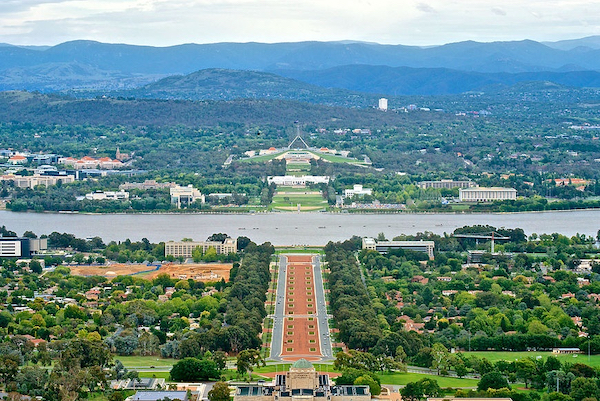
As we approach the end of the year, it’s a good opportunity to contemplate what the SKA project has achieved over the past 12 months.
There are many elements that need to come together to get a global mega-science project like the SKA off the ground and substantial progress has been made on them all.
In relation to the site itself, there’s been significant progress in negotiating the Indigenous Land Use Agreement, conducting Aboriginal heritage surveys and upgrading the infrastructure needed to support the growing number of people visiting the site.
The technical specifications of the different components of the telescope are almost finalised. Significantly, the design of the signal data processor (the brain of the telescope) is complete and we’ve recently used the world’s fastest supercomputer to test our data pipelines, resulting in never achieved before speeds of 400gb per second.
The signing and ratification of the SKA Convention to establish the SKA Observatory, the organisation that will be responsible for awarding contracts and carrying out telescope operations, is expected to occur soon which puts us on track for the Observatory to be established by the middle of next year.
I would like to thank the many, many people who have been involved in the project during 2019. It’s been hard work but the fruits of everyone’s labour are drawing closer. 2020 is going to be very exciting as we count down to construction.
David Luchetti, Australian SKA Office
.ashx?as=1&h=400&la=en&w=600&hash=47D5DCAF15B5FDE3319A3155EB4AA7209066BA53)
We've completed a prototype SKA-Low station on site, populated by the latest antennas - the ones that look like Christmas trees! This station of antennas, called the AAVS (‘Aperture Array Verification System’) is an important step in SKA pre-construction.
All 256 antennas have now been deployed on the ground mesh and the supporting power systems and electronics are being installed during scheduled team visits to site throughout December. These SMARTboxes are a nice piece of Australian engineering! Dedicated computer servers for the set of test arrays will be installed on an upcoming site trip.
Subsequent to this, the detailed testing has begun. Data from AAVS will be compared with data from a nearby station known as the EDA (or ‘Engineering Development Array’), which is an identical configuration of MWA antennas, the ones that are often likened to spiders. From this process we are learning many of the characteristics of the slightly different antenna designs. Comparing the data from these two stations will help SKA engineers decide which antenna will be best to use for SKA1-Low in early 2020.
Getting AAVS up and running has been a massive collaborative effort by both local and international teams, including GCo Electrical, Balance Utility Solutions, ICRAR and the Italian National Institute for Astrophysics (INAF).
Australia has expressed to the SKA Organisation its desires in terms of what contracts we are interested in for the construction phase of the SKA in Australia. This includes a range of infrastructure activities (everything from tracks, power and fibre installation, antenna installation building construction, etc) to certain aspects of the specialised digital computers, parts of the computing system, and aspects of the overall assembly, integration, verification and commissioning of the telescope.
Ant Schinckel, CSIRO and Mia Walker, ICRAR-Curtin

The Infrastructure team has been focusing on background issues.
We've been looking at things such as flood studies, impacts of array configuration changes, and power. Documentation from the SKA System Critical Design Review meeting, to be held in early December, has been submitted with very few questions being asked by the review panel to date (though as of this writing there is still time!).
We are expecting a number of design changes or modifications arising from the review in December that will make early 2020 a busier period.
Ant Schinckel, CSIRO
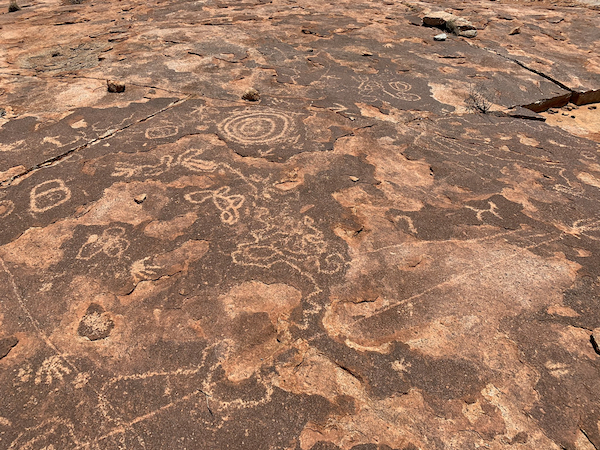
Great progress has been made on the heritage walkovers and the ILUA negotiations in 2019.
We have taken advantage of the cooler weather to continue with the heritage surveys required to build the SKA. (As a reminder, these are surveys by a team composed of the traditional owners, the Wajarri Yamatji, along with professional archaeologists and anthropologists and CSIRO staff). These have focused on the south and east spiral arms of the SKA Low telescope, and David joined the team recently for the final walkover for 2019, where he took the attached image of rock carvings.
In terms of the Indigenous Land Use Agreement, further meetings were held with the Negotiation Team and the Working Group in November and December. There are many steps involved in finalising an ILUA, including the creation of a Prescribed Body Corporate (PBC) – a trust body to manage the financial benefits from the ILUA, before the ILUA can be registered. We anticipate that the ILUA registration process will commence in the first half of 2020.
Ant Schinckel, CSIRO and David Luchetti, Australian SKA Office
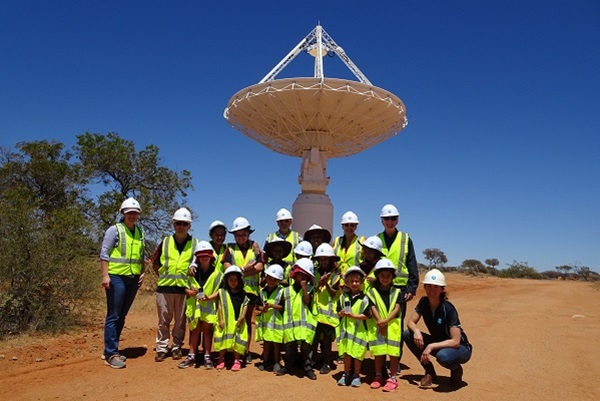
Our science and engineering staff place a high priority on inspiring and motivating the next generation and we welcome enquiries from the Midwest community about outreach opportunities.
The SKA Regional Stakeholder Group (RSG) meeting was held at the Geraldton University Centre on 3rd December. The RSG is chaired by Mr David Luchetti (DIIS) and representatives from various stakeholder groups includes CSIRO, MWAC, MWDC, GUC, ICRAR, Murchison Shire Council (MSC), WA Gov (JTSI), WA Main Roads, Geraldton Museum, and the Mid West Chamber of Commerce & Industry (CCI). This forum enables updates and robust discussion to occur that is specifically relevant to the SKA and as the name implies, the regional stakeholders.
We held the final Indigenous Land Use Agreement (ILUA) Liaison Committee meeting for 2019, held at CSIRO’s MRO Support Facility (MSF) in Geraldton during September. This provides the Wajarri Yamaji, CSIRO and the Department of Industry, Innovation and Science (DIIS), the opportunity to review MRO-related activities and opportunities and ensure compliance with the ILUA.
CSIRO education and science staff were out on country in October to host the Pia students’ annual site visit, and then to visit the students at school and run some STEM activities at the school. In addition to the activities on site, science staff also visited Champion Bay Senior High School in Geraldton and conducted activities with year 10 science students and other students from the Follow the Dream program.
Many of our science and engineering staff place a high priority on inspiring and motivating the next generation and we’d welcome enquiries from the Midwest community about ideas for future events and activities. If you’d like to discuss some new ideas for 2020, please contact Rochelle Desmond at the MRO Support Facility in Geraldton, rochelle.desmond@csiro.au.
Kevin Ferguson, CSIRO
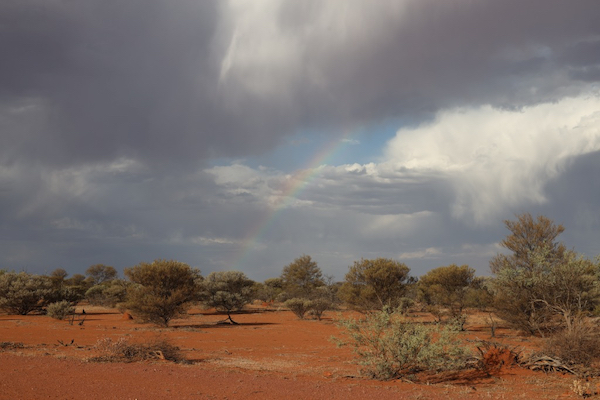
The new bores at Boolardy accommodation are working well. We’ve also conducted some repairs to some of the water points on the station and have a reliable supply of potable water for the homestead and accommodation.
We’ve completed our annual seasonal preparedness, conducting various checks and testing fire pumps and equipment. As part of this we’ve also cleaned up some growth around the homestead and other infrastructure.
A restricted tender process is underway for property services and catering at Boolardy.
Early planning is underway for civil repairs to the MRO entrance road. We’re hoping to be able to do this work in the first half of next year.
A section of fencing on the boundary of Boolardy Station and Milly Milly Station has been replaced. The new fencing is aimed to control the movement of stock and keep Boolardy Station free of grazing whilst it operates as a destocked pastoral station.
Planning has commenced for the 5 yearly maintenance of the 9km MRO access road which is scheduled for the first quarter of 2020.
We are evaluating the Request for Tender for the Boolardy Logistics Contract – which includes accommodation services and land management services.
Brett Hiscock, CSIRO
.ashx?as=1&h=399&la=en&w=600&hash=061B4DD6E6DE4A5E22910609E07C62AFA86DD5D7)
Some of the Murchison Widefield Array’s (MWA) antennas are so remote we rely on precise GPS locators to find them!
These antenna tiles are part of our ‘extended’ telescope configuration, which was deployed in 2017 and doubled the MWA’s imaging resolution and physical footprint. These remote antennas couldn’t be powered by the usual mains supply, so we made the most of the Murchison’s abundant solar energy, and designed equipment that could keep our tiles running even on the cloudiest days.
The main unit is a small white box called the BFIF (pronounced ‘bee-fiff’), short for BeamFormer InterFace, and it has two jobs. Firstly, it delivers power from the solar panels or batteries to the antenna tile. Secondly, it converts the antenna signals from a copper wire to an optical fibre, and this ensures the data can survive the three kilometre trip back to the centre of the telescope, where it can be digitised and read by computers.
Currently, the MWA telescope is in ‘compact’ mode, so these remote antenna tiles aren’t being used, which makes it the perfect time to perform maintenance on uncommunicative BFIFs. The MWA operations team and local contractors from GCo Electrical have made the most of this, to diagnose problems at some of these tiles. Safe to say, they met their daily step goals!
Mia Walker, Murchison Widefield Array

This year more than a decade of intense effort came to fruition with ASKAP in 2019.
In 2019 ASKAP transitioned from a construction project into an operational observatory. In a year full of firsts, we obtained the first fringes from the entire array (indicating that all antennas are working together as a telescope), conducted a series of test observations for our science teams, observed and processed our first all-sky survey, and commenced pilot observations for the full-scale survey projects that will occupy much of the next decade. Everyone on the ASKAP team deserves recognition for these amazing achievements. ASKAP is already producing world-first science, with exciting new discoveries flowing from pilot survey observations.
The transition from construction to operations did not happen instantaneously and we will be improving the operational efficiency of the telescope for many years. The beginning of operations has required re-thinking many aspects of how the telescope is run, so that we can dedicate more time to science observations while still supporting maintenance and ongoing development activities. Obtaining a suitable balance is a big effort, made especially challenging by the widely distributed nature of the ASKAP team.
Although the construction project is now complete, we have commenced an enhancement project operating under the Scaled Agile Framework, known as ASKAP-X. This project will initially focus on improvements required to deliver operational efficiency and then move on to develop upgrades and capability enhancements over the next three years.
Mixing this project in with operational responsibilities has been a challenge for all involved, but we have already seen significant improvements in our understanding of several outstanding issues. The next planning session will be held as a joint exercise in Sydney over two days in late January 2020.
Feedback from ASKAP’s commissioning process was provided to the Square Kilometre Array organisation at several meetings towards the end of the year. Accounts from other pathfinder and precursor projects are all very similar – commissioning a large radio telescope involves a great deal of complexity and the ability to deal with unforeseen situations.
Future milestones include a refresh of hardware at the Pawsey Supercomputing Centre (increasing ASKAP’s data processing capacity) and a review of allocated survey project time, which precedes the commencement of the surveys themselves. Meanwhile, we will continue pilot survey observations to gain experience with the new telescope and its science data.
2020 will see a steady increase in science output and the publication of the first all-sky survey with the full telescope. Congratulations again to the entire team and stay tuned for more next year!
Aidan Hotan, CSIRO
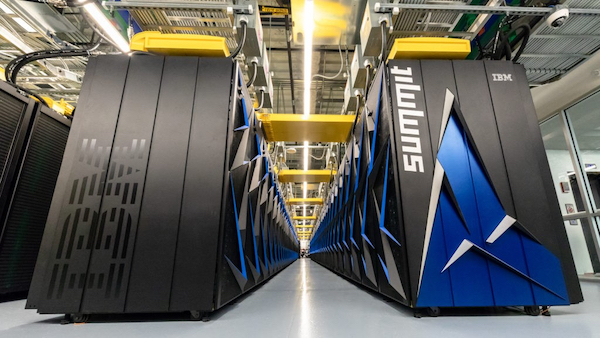
As mentioned above in David Luchetti’s update, researchers have processed 400 gigabytes of data per second as part of a data pipeline test for the Square Kilometre Array (SKA) telescope. In the future this is the scale (processing capability) we are entering into and CSIRO’s Pawsey HPC in Perth, WA will be built to accommodate this requirement.
Researchers from ICRAR, Oak Ridge National Laboratory in the US and Shanghai Astronomical Observatory worked together to use the world’s most powerful supercomputer, Summit, to process simulated observations of the early Universe, ahead of the SKA.
The data rate achieved was the equivalent to the load on the entire WA internet network if every household in the State started watching a movie on Netflix at exactly the same time.
Completing this test successfully tells us we’ll be able to deal with the data deluge of the SKA when it comes online in the next decade. But the fact that we needed the world’s biggest supercomputer to run this test successfully shows the SKA’s needs exist at the very edge of what today’s supercomputers are capable of delivering.
*fun fact - Summit is the world’s most powerful scientific supercomputer, with a peak performance of 200,000 trillion calculations per second!
Pete Wheeler, ICRAR
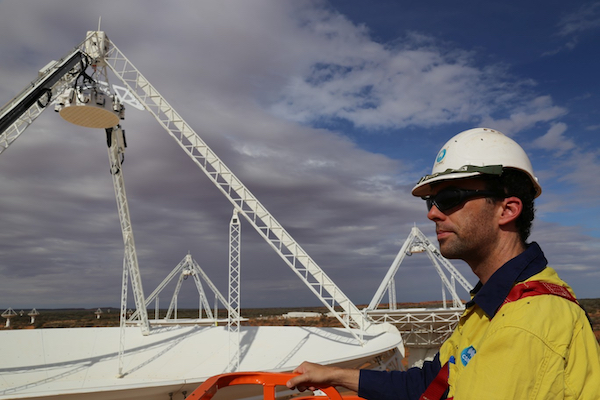
Hi everyone!
I'm from Tasmania where my parents own an electrical and refrigeration business in Launceston, and when I was growing up, I used to work with them during school breaks. I was always interested in electronics, so after college I continued working with them full-time and gained some qualifications in electrical, refrigeration, air-conditioning and solar.
I have always had an interest in astronomy and was reading about the ASKAP telescope one night when I noticed a job advertisement for the project. I applied, and in 2011 I began my employment with CSIRO and was moved all the way across the country to Geraldton.
I have been here for quite a while now. During the early days it was good working with the many and varied crews constructing the antennas, and working with the beta equipment. More recently, we have finished installing the ADE equipment and have entered a period of regular maintenance and breakdown repair. It has been good working with the people involved with the project over the years, and I hope this will continue into the future.
Recently, with others, I have been doing a lot of work on our hybrid power station. We had a crew come over from South Korea and do some warranty repairs on our power station battery. Since then, we have been able to get some good functionality out of the solar and battery setup, saving us (and the environment) from burning countless litres of diesel.
In my spare time I enjoy spending time with my family, drumming, cooking and reading. I am also doing some part time study. Soon my partner and I will be travelling to the UK for my first (hopefully!) white Christmas with her friends and family.
Best wishes to all our readers and especially our neighbours out here at the MRO for a fantastic festive season!
Alex Harding, CSIRO
CSIRO acknowledges the Wajarri Yamaji as the traditional owners of the MRO site.